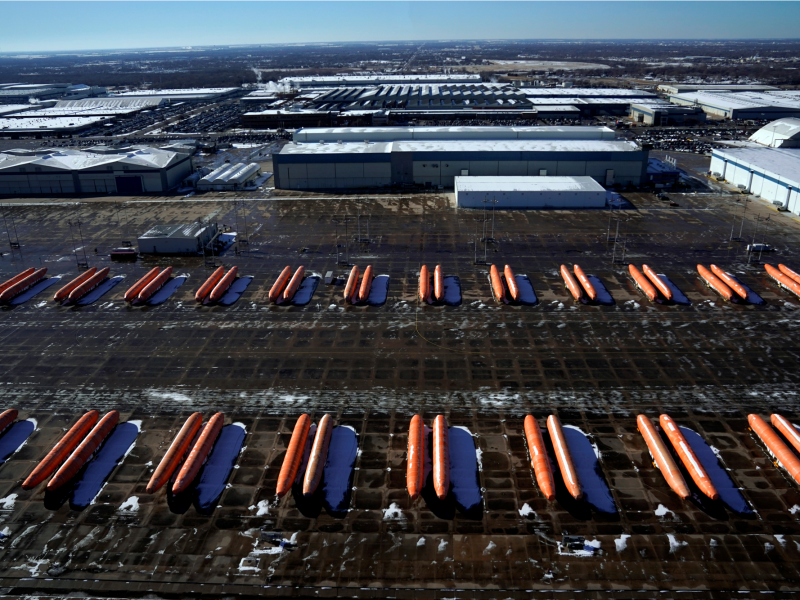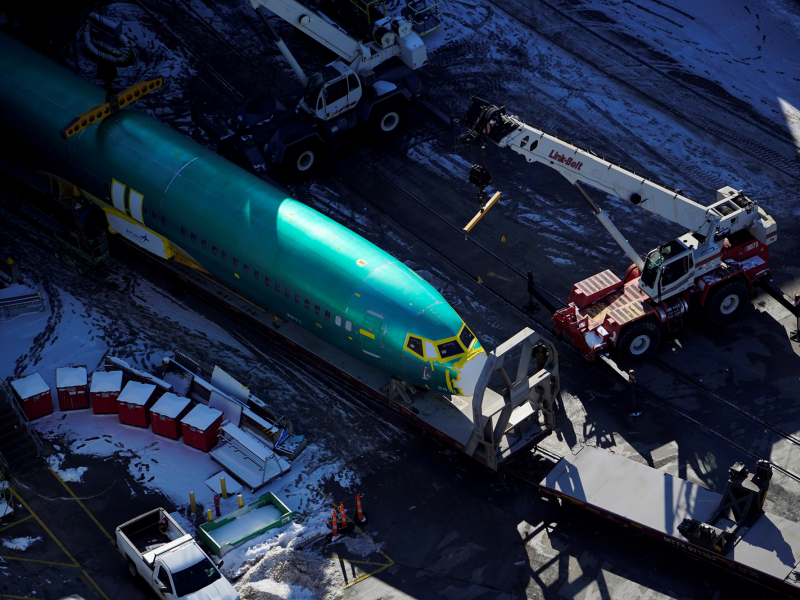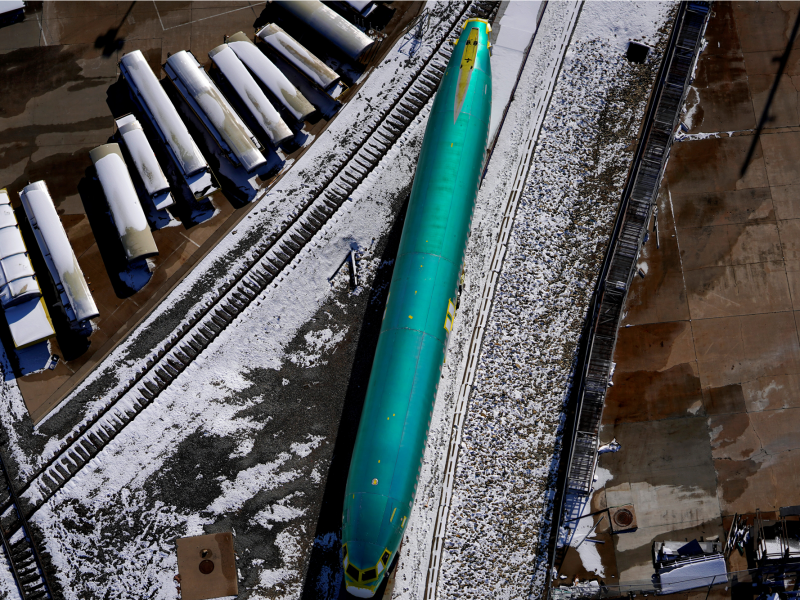- Boeing has announced that it will temporarily halt production of the 737 Max plane.
- The plane has been grounded by the FAA for almost a year after two major crashes.
- Boeing announced it would not be making any layoffs as a result of this decision and that employees would instead be redirected to other tasks.
- However, there is now an increasing backlog of uncompleted planes that are sitting in Boeing’s production line.
- Visit Business Insider’s homepage for more stories.
Photos taken at a Boeing partner factory in Wichita, Kansas, show the growing number of uncompleted 737 Max planes that are backlogged on the plane maker’s production line now that the company has announced it will be suspending production of the controversial airplane model.
These planes are now sitting idle as its grounding has hit the nine-month mark. Boeing said it now had about 400 planes in storage.
“This decision is driven by a number of factors, including the extension of certification into 2020, the uncertainty about the timing and conditions of return to service and global training approvals, and the importance of ensuring that we can prioritize the delivery of stored aircraft,” Boeing said in a statement.
Boeing has about 680 suppliers and hundreds of other subcontractors working to create the 737 Max. While the company doesn’t have plans to lay off any of its own employees, there is fear that furloughs will begin with the suppliers that Boeing may stop paying, Reuters reported.
This includes Spirit AeroSystems, which had enough factory workers to create 52 plane fuselages per month, and counting before the 737 Max groundings. Spirit is one of the largest 737 Max suppliers.
Keep scrolling to see the grounded planes and what the effects of the production halt may have on Boeing's suppliers and the US economy:
Boeing said it was prioritizing delivering the planes over continuing production.

However, it will keep purchasing parts from select suppliers, though likely at a decreased rate, The New York Times reported.

Source: New York Times
The amount of support given to contractors will be decided case by case.

Before its announcement, Boeing had already been reducing the rate of 737 Max production.

Fifty-two planes were produced during the month of April, a rate that has since dropped ...

... to 42 planes a month.

Boeing purchases its parts from companies like General Electric and France-based Safran, along with lesser-known specialized companies.

Safran has announced that they are cutting down production from making parts from 42 planes…

...to 15 planes a month, the New York Times reported.

Source: New York Times
"The potential loss of talent, access to capital and incremental risk on the supply chain all create substantial uncertainty about Boeing's ability to increase production levels once the pause ends," Canaccord Genuity analyst Ken Herbert told Reuters.

Source: Reuters
Boeing's stock dropped 4.3% at market close on Monday following the planemaker's announcement that it would halt 737 Max production.

This amounted to a loss of $8.3 billion on its market value.

Source: Markets Insider
JP Morgan analysts claim Boeing will continue to lose over $1 billion a month even after stopping production, CNBC reported.

Source: CNBC
It will also cause a 0.5% decrease in the United States GDP growth rate during the first quarter of the new year.

Source: Markets Insider
"As we have throughout the 737 Max grounding, we will keep our customers, employees, and supply chain top of mind as we continue to assess appropriate actions," Boeing said in a statement.

“This will include efforts to sustain the gains in production system and supply chain quality and health made over the last many months,” it continued.

President Trump reportedly called Boeing CEO Dennis Muilenburg on Sunday to discuss the production halt and state of the company, the New York Times reported.

Source: New York Times
The Federal Aviation Administration's analysis discovered that without its intervention and the halting of 737 Max services, the plane would likely crash another 15 times over the course of 30 to 45 years, the Wall Street Journal reported.

Source: Wall Street Journal
It is currently unclear when production will begin again.


